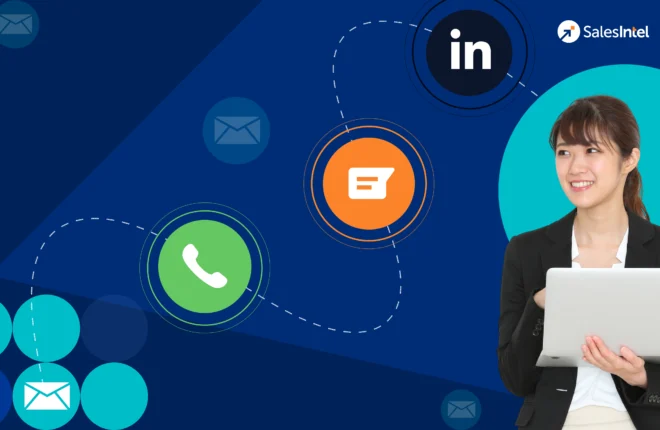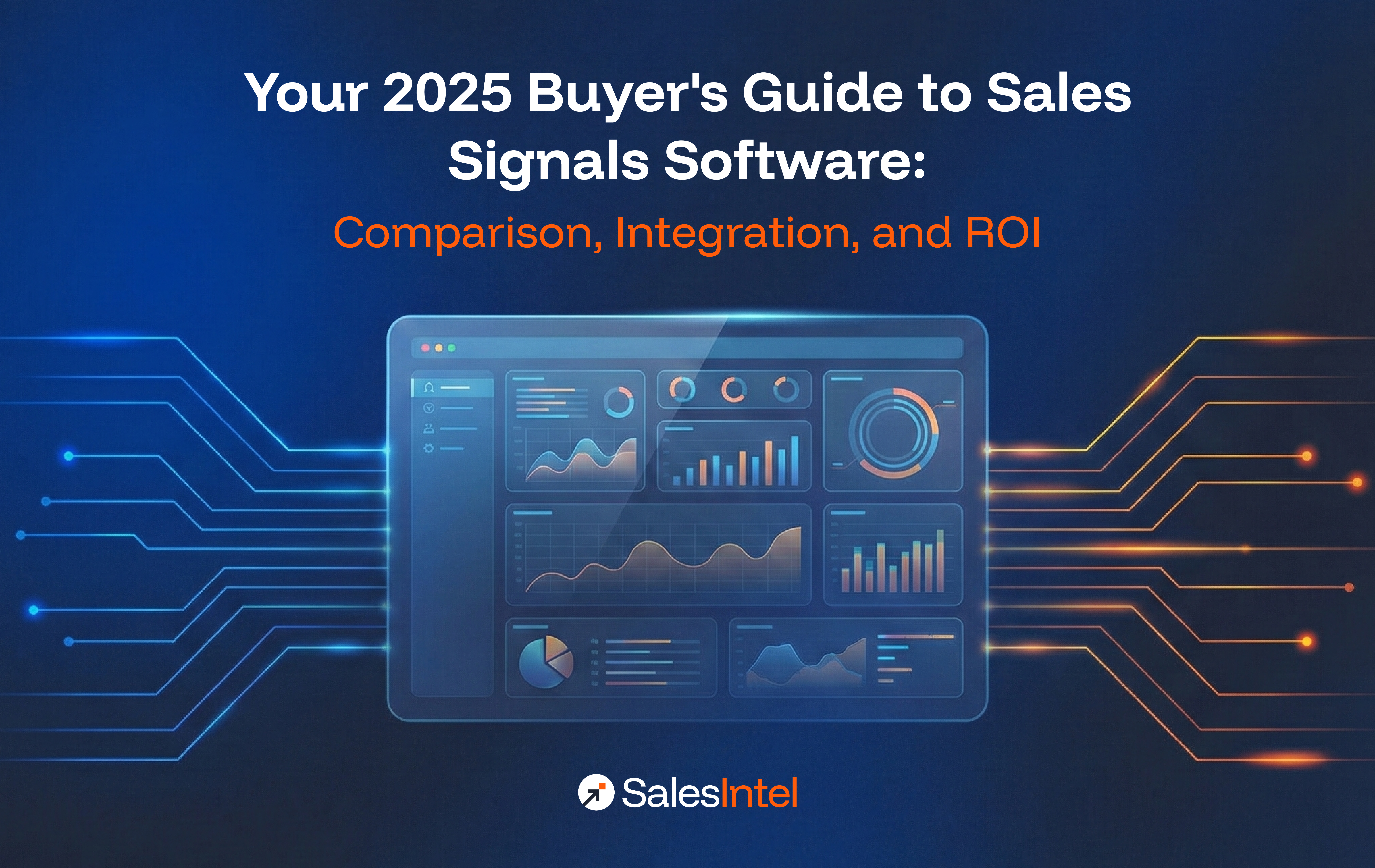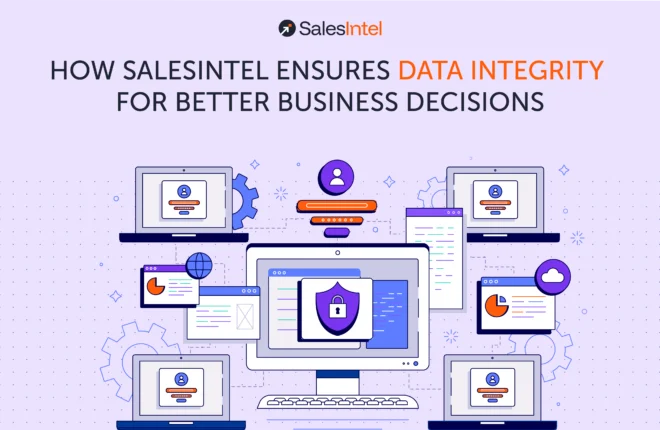In today’s fast-paced sales environment, reaching out to potential customers is just half the battle won. With prospects constantly bombarded by emails, cold calls, and social media messages, it’s more important than ever to stand out. A well-structured outreach plan can make all the difference, ensuring consistent follow-ups and effective lead nurturing. This is where a carefully crafted sales cadence becomes crucial—it’s the framework that helps sales teams stay organized, improve engagement, and close more deals.
A sales cadence is a systematic sequence of touchpoints across multiple channels like emails, calls, LinkedIn messages, and even SMS. It outlines when and how often to connect with leads, making sure no opportunity slips through the cracks. By keeping prospects moving through the funnel, it helps nurture relationships and turn leads into paying customers.
In this blog, we’ll show sales professionals how to build an effective sales cadence that boosts engagement and conversion rates. From defining the cadence to personalizing your outreach, we’ll cover practical tips and strategies to help you elevate your sales game.
What Is a Sales Cadence?
A sales cadence is a structured sequence of touchpoints that sales professionals use to engage prospects over time across various channels. It outlines the frequency, timing, and content of outreach attempts through emails, phone calls, LinkedIn messages, or other communication methods. Instead of reaching out sporadically, a cadence ensures that follow-ups are planned and intentional, making it easier to build relationships and guide leads toward conversion.
Sales Cadence vs. Sales Script
- Sales Cadence:
A sales cadence serves as the roadmap for when and how to engage a prospect across different touchpoints. It involves multiple steps, such as sending an introductory email, following up with a call, and connecting via LinkedIn. Cadences are designed to keep prospects engaged over time, gradually warming them up and increasing the chances of closing a deal. For example, a sales cadence might span 10-12 days with 6-8 touchpoints, strategically using different channels to avoid overwhelming the prospect. - Sales Script:
A sales script is a predefined set of talking points or messaging frameworks used during specific interactions, such as a cold call or a discovery meeting. It provides guidance on what to say, how to introduce your product or service, and how to respond to common objections. Sales scripts help maintain consistency in messaging and ensure that sales reps stay focused on delivering value within individual touchpoints.
While a sales cadence ensures that outreach is consistent over time, a sales script helps sales reps deliver the right message during each interaction. Think of it this way: A cadence is the “when and how”, while a script is the “what to say.” Both tools are essential, but they serve distinct purposes.
For example, an effective cadence without well-prepared scripts can lead to missed opportunities in conversations. Similarly, great scripts without a cadence might result in inconsistent follow-ups that derail the sales process. Using both tools together ensures that your outreach strategy is both structured and persuasive.
Cadence Best Practices
Building an effective sales cadence requires more than just scheduling follow-ups. It’s about engaging prospects consistently across multiple channels without overwhelming them. Below are the key best practices that ensure your cadence maximizes engagement and conversions.
1. Multi-Channel Approach
Using multiple communication channels increases the chances of reaching prospects where they are most comfortable.
- Emails: Provide detailed information and value propositions.
- Calls: Allow for personalized, real-time conversations and problem-solving.
- LinkedIn: Build rapport and nurture professional relationships with soft-touch messages.
- SMS: Great for reminders or follow-ups once some rapport has been established.
A multi-channel approach ensures that no opportunity to connect is missed and helps maintain engagement throughout the cadence.
2. Frequency and Timing
Striking the right balance between persistence and patience is crucial. Bombarding prospects with too many messages can annoy them, while waiting too long between touchpoints may lead to lost interest.
- Space out your touchpoints strategically, such as an email on day 1, a LinkedIn connection request on day 3, and a follow-up call on day 5.
- The goal is to maintain momentum without overwhelming the prospect, keeping your outreach polite but top of mind.
3. Length of Cadence
An ideal cadence balances enough interactions to nurture a lead but not so many that the prospect feels harassed.
- 6 to 12 touch points spread over 2-4 weeks works well in most industries, with each touchpoint offering new value or reinforcing your message.
- The length may vary depending on factors like your industry, prospect profile, and sales cycle, but the key is to stay relevant throughout the process.
4. Avoid Automation Fatigue
Automation tools can streamline cadences by scheduling emails and follow-ups, but over-reliance on automation can make your messages feel impersonal and generic.
- Use automation to handle routine tasks (like follow-up reminders) but personalize each interaction based on the prospect’s interests, company updates, or intent data.
- Use dynamic fields in emails to include the recipient’s name or company and reference their specific pain points or goals.
5. Follow-Up Strategies
A single outreach attempt rarely results in a closed deal—most sales happen after 5-7 touchpoints. Consistent follow-ups show persistence, which prospects appreciate when done politely and professionally.
- Instead of just checking in, follow up with new information, insights, or case studies to keep adding value.
- Politeness matters. Use phrases like “Just wanted to make sure this didn’t slip through the cracks” to keep the tone friendly rather than pushy.
- Following up at strategic intervals increases the likelihood of responses while maintaining a professional relationship.
These best practices, when implemented correctly, help maintain a perfect balance between persistence and personalization, ensuring that your outreach builds trust without alienating prospects.
Personalization Tips to Elevate Your Cadence
Effective personalization goes beyond just inserting a prospect’s name into an email. It’s about demonstrating that you understand their pain points, goals, and context, making each interaction meaningful. Below are practical ways to personalize your sales cadence and increase engagement.
1. Do Your Research
Tailor your message to the prospect’s role and needs.
Understanding who your prospect is and what they care about is essential for creating relevant messages.
- Research their role: For example, a CFO might care about cost savings, while a Sales Manager is more focused on revenue growth.
- Check their company news: Reference recent announcements or industry trends relevant to them.
- Customize your offer: Highlight how your product solves specific challenges they may face based on their job function or company situation.
Example: “Hi [Name], I noticed your team just expanded to three new regions. Here’s how our tool can help you onboard sales reps faster while keeping processes consistent.”
2. Use Dynamic Fields
Personalize emails using fields like name, company, and industry.
Dynamic fields allow you to automate personalization by inserting unique information for each recipient within templated messages.
- Name and Company Fields: Personal greetings (e.g., “Hi John at Acme Corp”) instantly make your emails feel less generic.
- Industry-Specific Language: Tailor messaging to industries (e.g., “We’ve seen great results with SaaS companies just like yours”).
- Pain-Point Personalization: For prospects in similar industries, mention how your product helped a competitor solve a common challenge.
This small touch makes your communication feel intentional, increasing the likelihood of a positive response.
3. Leverage Buying Signals
Identify prospects showing buying signals and customize your outreach.
Intent data reveals which prospects are actively researching solutions like yours, giving you insight into their interest level.
- How it helps: If a lead is researching topics related to your product, you can time your outreach perfectly with relevant information.
- Example: If a company is searching for CRM solutions, you can send an email explaining how your product integrates seamlessly with top CRMs.
- Use Tools: SalesIntel and ZoomInfo help gather intent signals and behavioral data to target high-potential leads effectively.
Proactively engaging prospects and showing buying intent makes your outreach both timely and relevant.
Strengthen connections with contextual messaging.
Referencing shared interests, events, or mutual connections makes your outreach feel personal and builds trust faster.
- Example: “I saw you attended the SaaStr Annual event last month—did you catch the keynote on scaling sales teams?”
- Mention mutual contacts: Referrals from trusted sources build credibility. “John from [Mutual Company] mentioned that you were exploring ways to streamline your sales operations.”
- Use LinkedIn insights: Reference posts or comments made by the prospect to spark a personalized conversation.
This type of messaging creates an immediate connection and increases the chances of a positive interaction.
Incorporating these personalization strategies elevates your sales cadence by demonstrating that you’ve invested time and effort in understanding your prospects. When prospects feel seen and understood, they are far more likely to engage, making your cadence both impactful and successful.
Example of an Ideal Sales Cadence
Below is an example of a 6-step multi-channel sales cadence that balances persistence with personalization. It uses email, LinkedIn, and phone outreach strategically across 12 days to keep the prospect engaged without being too aggressive.
Day 1: Initial Email Introduction
- Goal: Introduce yourself, your company, and offer value upfront.
- Subject Line: “Hi [Name], Helping [Company] Achieve [Specific Goal]”
- Body: Personalize the message by referencing the prospect’s industry or recent news about their company. Highlight how your product can address a known pain points.
- CTA: Suggest further discussion or ask if they’d be open to learning more.
Day 3: Follow-up Email with a Case Study
- Goal: Reinforce your initial outreach by demonstrating credibility with a relevant case study.
- Subject Line: “See How We Helped [Similar Company] Solve [Pain Point]”
- Body: Briefly summarize the success story and attach or link to the case study. Emphasize how your solution can achieve similar results for the prospect.
- CTA: Encourage a response or offer to schedule a brief call.
Day 5: LinkedIn Connection Request
- Goal: Establish a professional connection on a less formal channel. Comment on recent posts, articles or other activities they’ve participated in that you find interesting.
- Message:
“Hi [Name], I admire the work [Company] is doing in [Industry]. I’d love to connect and share some insights on how we help companies like yours achieve [Goal].” - Keep the message short and polite, focusing on relationship-building rather than a direct sales pitch.
Day 7: Phone Call to Check on Previous Emails
- Goal: Use a call to engage directly and confirm if the prospect received your emails.
- Script Tip: Be polite and open.
“Hi [Name], I wanted to quickly check if you had a chance to go through my previous emails. I’d love to chat and see if what we offer aligns with your current goals.” - If they don’t answer, leave a voicemail mentioning the emails and letting them know you’ll follow up again soon.
Day 10: Final Follow-up Email Offering a 10-Minute Call
- Goal: Offer a no-pressure opportunity for a brief discussion.
- Subject Line: “Quick 10-Minute Chat – When Works Best?”
- Body: Acknowledge previous outreach attempts to show persistence and politeness. Offer a specific date and time for a short call but leave flexibility.
- CTA: Include a scheduling link (e.g., Calendly) to make it easy for them to book a time.
Day 12: LinkedIn Message with a Different Value Proposition
- Goal: Introduce an alternative angle to re-engage the prospect.
- Message:
“Hi [Name], I wanted to quickly share how one of our clients recently achieved [New Benefit] using our platform. I believe [Company] could see similar results—happy to share more details if you’re interested!” - This message offers fresh value, showing that you are still interested but without pressuring them.
Why This Cadence Works
- Multi-Channel Engagement: Uses emails, phone calls, and LinkedIn to increase touchpoints and visibility.
- Balanced Timing: Messages are spaced over 12 days to keep the momentum without overwhelming the prospect.
- Persistent but Polite Follow-ups: Each step offers value while maintaining a polite, professional tone.
- Personalization at Every Step: Tailoring subject lines, case studies, and messages to the prospect’s needs makes the outreach feel relevant and thoughtful.
This cadence creates multiple touchpoints across channels, demonstrating persistence, professionalism, and value, increasing the chances of securing a meeting or deal.
The Best Sales Cadence Tools
These are the five must-have tools that empower our reps to run smooth, efficient sales cadences!
1. SalesIntel
A salesperson is only as effective as the data they have, and SalesIntel delivers top-tier contact data to fuel your cadences!
With access to ~95% accurate contact data on 200M+ professionals, including mobile numbers and direct work dials, SalesIntel helps sales teams connect with the right decision-makers faster. Additionally, the platform offers real-time intent data, ensuring your outreach targets prospects actively searching for your solutions. And with VisitorIntel, you can even uncover anonymous website visitors and reach out to them confidently.
Ready to see how SalesIntel can boost your outreach? Book a demo today to connect with one of our experts. or watch this pre-recorded overview-
2. Outreach
Outreach is a cutting-edge sales engagement platform designed to enhance communication across multiple channels. Whether you need to automate email sequences, schedule follow-ups, or gain AI-driven insights, Outreach enables reps to engage leads more effectively and convert faster.
3. HubSpot Sales
HubSpot Sales integrates seamlessly with your CRM, offering automation and personalization for your sales cadences. From personalized email templates to real-time tracking of open rates and responses, HubSpot ensures that your team stays on top of their outreach efforts without sacrificing human touch.
With HubSpot’s tools, you can easily manage follow-ups, access pipeline analytics, and adjust your cadence based on performance metrics.
4. Aircall
For seamless phone outreach, Aircall is a game-changer. It allows reps to connect with prospects directly, drop voicemails, and track call outcomes within their CRM. The platform also provides call analytics to help you refine your strategy and optimize connection rates.
5. ChatGPT
Yes, ChatGPT isn’t just for fun queries—it’s an invaluable tool for sales reps running cadences. Whether it’s researching industries, drafting personalized emails, or brainstorming follow-up strategies, ChatGPT helps sales teams stay creative and efficie
Give ChatGPT a try—use prompts like, ‘What are the common challenges in [Industry]?’ and watch your productivity soar!
These tools ensure that your sales cadence flows smoothly, targets prospects accurately, and personalizes outreach across multiple channels. By combining data, engagement platforms, VoIP tools, and AI, you can create winning cadences that spike up your sales.
Choose the tools that best fit your workflow and watch your conversions skyrocket!
Spike Up Your Sales with the Right Cadence
A well-designed sales cadence is key to building meaningful connections with prospects and driving conversions. It’s not just about sending messages—it’s about balancing personalization, multi-channel outreach, frequency, and effective follow-ups. A thoughtful cadence ensures you engage with prospects at the right time and through the right channels, creating more opportunities to close deals.
By implementing best practices like intent-based targeting, personalized messaging, and consistent follow-ups, your sales team will stay ahead of the competition. Tracking key metrics like open rates, reply rates, and meeting conversions will help fine-tune your cadence, making it more effective over time.
It’s time to build your winning cadence! Implement these tips, track your metrics, and make continuous improvements to see real results.




